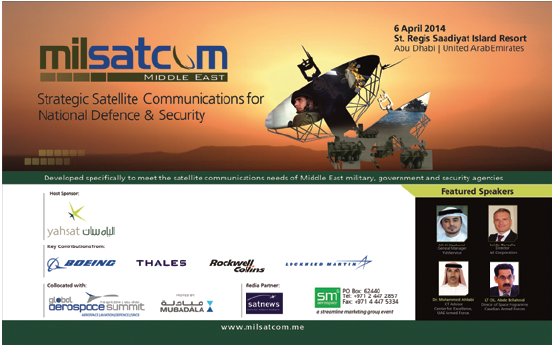Peg Grayson brings more than 30 years’ experience in the telecommunications industry to MTN Government. A presidential appointee to the National Infrastructure Advisory Council (NIAC), she actively participates in the development of policy recommendations and guidance to the White House through the Department of Homeland Security.

Appointed to the NIAC by President Bush in 2002, Grayson is currently serving at the request of President Obama. An expert in cybersecurity and information sharing, she has participated in several comprehensive studies advising the president on the security of the nation’s critical infrastructures and information systems.
Prior to MTN Government, Grayson held leadership roles at technology companies, focusing on finance, policy, regulatory compliance, and risk management. As president and CEO of V-One, she worked closely with federal, state and local government agencies on the requirements and design of security products, developing deep expertise in cybersecurity, data integrity and information sharing in wired, wireless and satellite networks.
Other key positions include CFO of MTN Inc., federal compliance manager for Tremco Inc., President of Coalescent Technologies Corp., President of AEP Networks, vice president and CFO for SPACEHAB, Inc., and CFO for Sirius Satellite Radio. Grayson started her distinguished career as a senior finance manager for Honeywell Aerospace and Defense.
Grayson earned a B.S. in accounting from the State University of New York Buffalo, an MBA in finance from the University of South Florida, and a certificate in international finance from Georgetown University. She serves on the board of directors for several public and private companies and is on the Dean’s Council and Advisory Board of the School of Business at the State University of New York in Buffalo.
MilsatMagazine (MSM)
Would you please inform our readers of your background? How did you become interested in the satellite communications side of this industry?
Peg Grayson
Prior to my current role as the president of MTN Government (MTNGOV), I was in leadership roles at technology companies and I was focused on finance, policy, regulatory compliance and risk management. I became very interested in satellite communications as president and CEO of V-ONE. I worked closely with federal, state and local government agencies on the requirements and design of security products, developing deep expertise in cyber security, data integrity and information sharing in wired, wireless and satellite networks where latency issues across satellite links for encrypted data has to be solved.
In 2002, I was appointed to the National Infrastructure Advisory Council (NIAC) by President Bush and am currently serving at the request of President Obama. My expertise is in cyber security and information sharing and I have participated in several comprehensive studies, through the Department of Homeland Security, advising the president on the security of the nation’s critical infrastructures and information systems.
MSM
MTNGOV has a legacy of innovation that spans across many industries. How do you translate your commercial satellite communications innovations to defense, homeland security and intel?
Peg Grayson
For more than 30 years, our company has been at the forefront of satellite communications innovations. We brought to market many industry firsts, including the first maritime VSAT antenna (aboard the USS Iwo Jima), the first Ku-band Comms-On-The-Move (COTM) for media embedded with the U.S. Army, and the first onboard Internet café on a cruise ship.
Our company’s legacy of innovation spans across industries, and in recent years, has expanded to include cloud computing and cyber security technologies to meet the ever-evolving government marketplace. The U.S. Government has arguably the most intricate communications requirements in the nation, maybe even the world, and we are able to offer a comprehensive range of communications solutions designed to meet those requirements and improve agencies’ operating efficiency.

MSM
What services offered by your company are experiencing the most demand? Why do you believe this is occurring?
Peg Grayson
MTNGOV has the ability to offer the worldwide infrastructure of our parent company, MTN, to provide satellite, terrestrial and teleport communications anywhere and anytime our customers need to be connected. Our network operating centers for both commercial and government customers ensure the reliability and security of our networks. This capability continues to be in the highest demand. Our significant capacity is always being strengthened by the awareness that technology is never static. We are always seeking ways to bring new communications solutions to our customers.
From the start of the wide spread use of network communications, security concerns have been—and continue to remain—a primary challenge, and we remain a leader in designing secure, robust and resilient networks for commercial and government users. Today, strong network security must be enhanced to augment traditional security solutions and further protect organizations against security threats. There is a great need to address this emerging threat through predictive analytics.
MTNGOV now offers cybersecurity managed services for government focused on detecting and analyzing emerging threat vectors in social media targeting our country’s leaders and agencies. We take an intelligence first approach to tackling the advanced cyber threat, and use advanced big data algorithms in the cloud to ensure the ability of identifying and predicting a hacker’s next move before it can reach its target..
MSM
What new markets are you hoping to enter over the coming years?
Peg Grayson
MTNGOV plans to leverage our global communications infrastructure to deepen our role in the provision of ISR services for manned and unmanned aerial systems. Our strength in is providing end-to-end solutions. We will expand this by including analytics.

MSM
How has MTNGOV dealt with the impacts of the government budget concerns (and last year’s shutdown), and how has such impacted services?
Peg Grayson
We recognize how important value is to our U.S. government customers. We engineer our satellite solutions for value and efficiency and we are investing in cloud computing, cyber security and intelligence services innovations that maximize value for our customers.
MSM
Do you see hosted payloads as playing an even greater role for MILSATCOM over the next year or so?
Peg Grayson
The U.S. Air Force Space Command issued a call last year for proposals on how commercial satellites could host military payloads. The budget bill approved by Congress last month directs the Department of Defense to look at both longer commercial satellite leases and hosted payloads as a means of filling military requirements. Both of these are very big steps forward. The economic advantages to the government of using commercially hosted payloads are significant and I think they will play an increasing role in meeting the military’s requirements for satellite capacity.
MSM
Will small satellites (i.e., nano, pico, micro, mini) become a major consideration for businesses as they confront reduced budgets for communications projects, given the interest impetus by DARPA and other agencies for these technologies?

Peg Grayson
This trend toward smaller satellites has been happening over time, with much of the interest in developing countries where affordability has been the key driver. The timing is ripe now as it matches the changes in capacity afforded by cloud computing, and new analytical tools that can make sense of big data. DARPA could play a huge role in changing the shape of satellite constellations with small, very-low orbiting satellites that will deliver affordable on-demand information to military in the field.
MSM
As a presidential advisor on the NIAC, what do you see as the main imperatives for the satellite community?
Peg Grayson
NIAC recently delivered a report to the White House responding to requests by the President regarding the strength and resilience of our cyber infrastructure. From these findings, we deduced that communications remains a critical infrastructure for protection, resilience and recovery and as one of the lifeline sectors, as important as energy, water and transportation.
I believe that the commercial satellite community needs to shift from merely “transmitting in the clear,” or keeping data flowing from point A to B, to a culture with an intrinsic shared responsibility to provide secure communications. Moreover, the federal government needs working partnerships between agencies, local governments and industry to achieve national resiliency because of the complexity and interdependencies of our critical infrastructure.
MSM
An area of concern for many businesses is that of an adequate talent pool from which to hire for crucial projects. How can we, as an industry, support increased STEM training in our schools and colleges? Is MTNGOV involved in any such projects?
Peg Grayson
As a former college professor, I recognize the importance of capturing imagination and encouraging students interested in furthering their science and technology education. MTNGOV offers a learning extension program for our staff, which provides financial and other resources that enables them to advance their education and/or add a degree. This investment helps develop a talent pool that benefits our company and customers, as well as the industry.
Case in point, we currently have a staff member who is pursuing a Master of Professional Studies in Technology Management. He has been able to leverage his prior work experience and his Masters education to develop a new line of intelligence services meeting specific customer needs in our market.
MSM
What do you see in the future for federal sector satellite and cybersecurity endeavors? What are your hopes and plans for the next year or so?
Peg Grayson
While IT and other areas are seeing declining or flat-lined budgets, the U.S. government is committing more budget dollars to cybersecurity than ever before. Congress wants to more than double the funding of the U.S. Cyber Command, the White House has issued directives to protect the nation’s critical infrastructure, and more than one top official has predicted recently that “the next war will be fought in cyberspace.” Therefore, my hope for the next few years is that the federal government continues to expand the development of working partnerships between agencies, local governments and industry to achieve national resiliency because of the complexity and interdependencies of our critical infrastructure.
MSM
Lastly, given your 30+ years of professional work within our industry, when you look back upon your career, what projects bring you the most satisfaction for a job well done?
Peg Grayson
That is a difficult question, as I have had the privilege to work with some of the most committed individuals one could hope for in an industry that is fundamental to the information age.
Always a stand out as I reflect on my career is my work with a NASA-sponsored public/private partnership with my then company, SPACEHAB. Through this program, NASA, our international partners and private industry worked together to design and develop scientific modules that flew on board the space shuttles. These modules enabled research experiments to be performed in zero gravity conditions and prove the need for and viability of this new frontier as a valuable laboratory for making our lives better through pharmaceutical and other product development that cannot be done on earth.

Clearly, working with the NIAC Committee on studies that bring so many committed people from government and industry together is a project that I am really pleased to have the opportunity to support. Our committee provides guidance that identifies recommendations to mitigate threats and risks to our critical infrastructures that enable our national security and way of life. As each report is submitted for consideration, there is continuous recognition that sharing information and learning what is needed to secure our way of life is a job that will never be done.
Lastly, my work today as president of MTNGOV is extremely rewarding because this company is a personification of 30 years of innovation and contribution as a part of and for the satellite communications industry. I find that the greatest satisfaction is not just serving our customers on time and on budget, but hearing them say, “Thank you, I did not realize that what you did for us was possible.”
In homage to the servicemen and women who make daily sacrifices to serve the United States and allied governments, MTN Government has adopted the moniker, Steel Force Blue.
It represents the company’s determined spirit to continuously create innovative solutions to help warfighters and civilians do their jobs to the best of their ability. Conducting business with a Steel Force Blue frame of mind, MTN Government consistently strives to emulate servicemen and womens’ dedication, commitment and capabilities.
* * * * * * * * *
Artel + MTN Government
A Productive Partnership
Recently, Artel, LLC and MTN Government formed a strategic alliance to collaborate and team together to develop select business opportunities.
Through this expanded relationship, the Artel-MTN team will integrate Artel’s proven end-to-end secure managed network services and MTN Government’s global network infrastructure.
“The Artel-MTN Government alliance enables our team to quickly respond to our government customer’s need for reliable, cost-competitive global coverage,” said Ted Hengst, President and CEO, Artel, LLC. “Our combined expertise will deliver the throughput and tailored innovative solutions for secure access and delivery of content across all their networks and infrastructures, in every domain and environment.”
“MTN Government delivers satellite communications, cyber and intelligence services and innovations purpose-built for military and government customers,” said Peg Grayson, President of MTN Government. “We are pleased to be teaming with Artel on a series of new and exciting business opportunities that leverage our complementary company strengths and industry relationships.”
For more information regarding MTN Government Services: http://www.mtngov.com/
For more information regarding Artel: http://www.artelllc.com/
MTN Government also provides Intelligence, Surveillance and Reconnaissance (ISR) services for manned and unmanned aerial systems. These services are all based on the firm’s global communications infrastructure.
A range of services consists of full communications support for various platforms, analytics, systems integration, ILS and field support, as well as SATCOM and long-haul connectivity to provide the crucial backbone for the ISR devices



